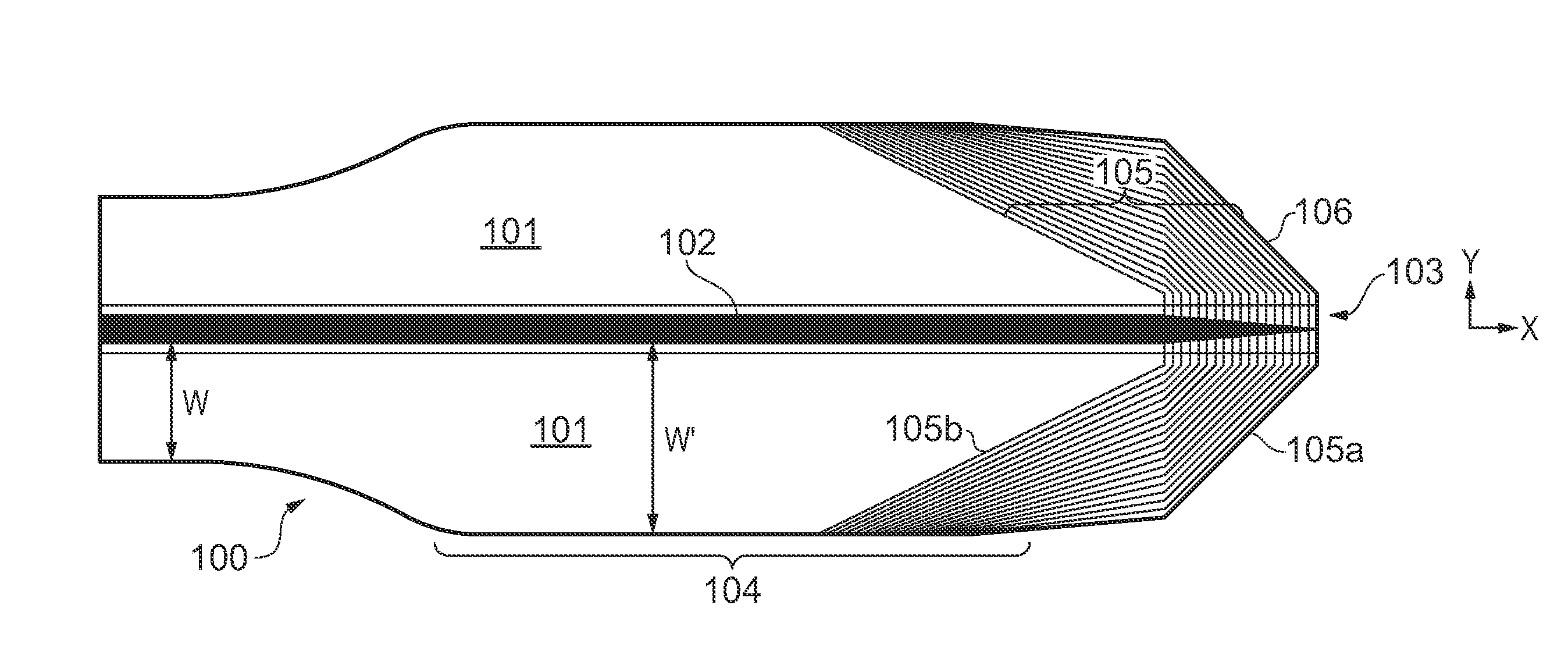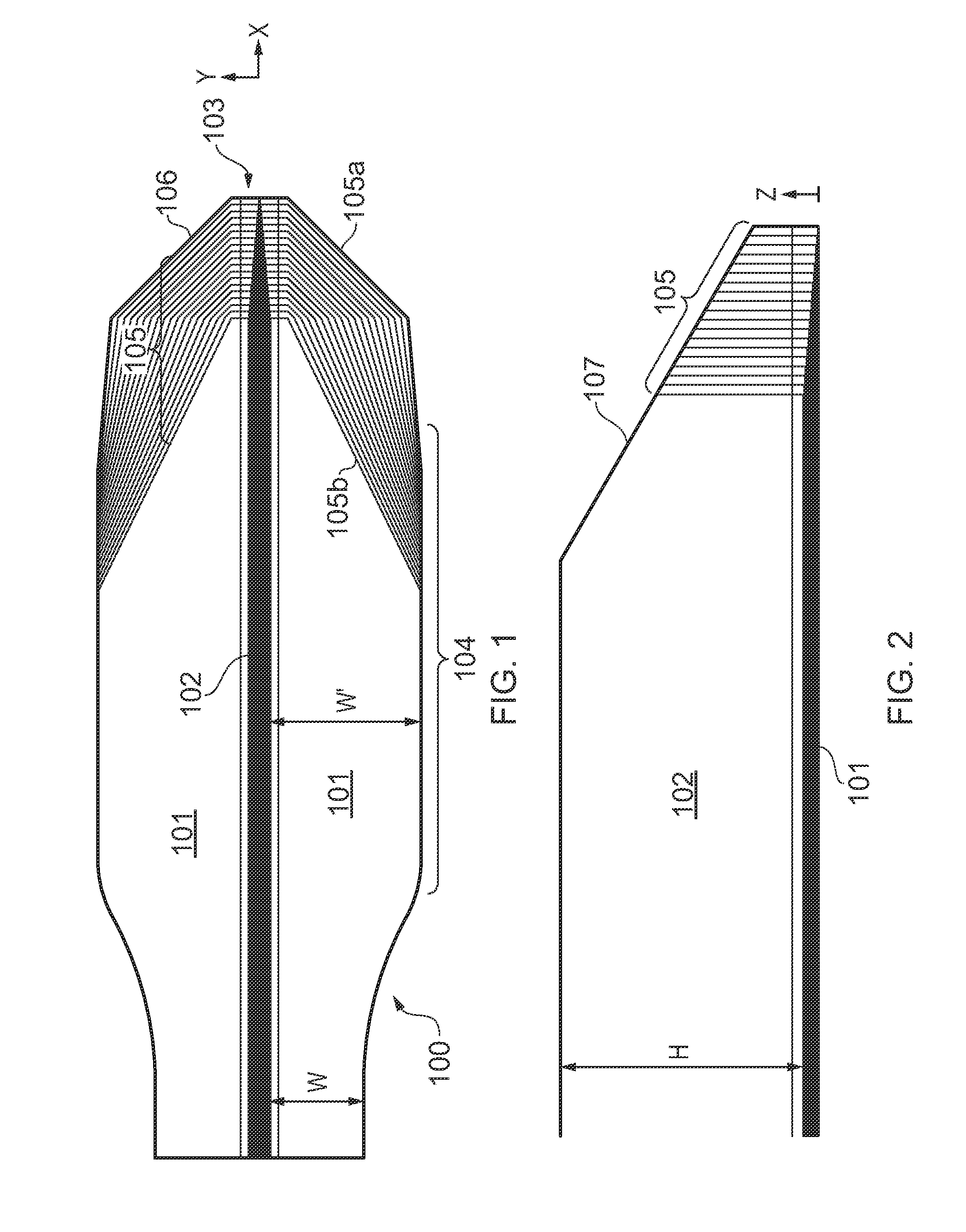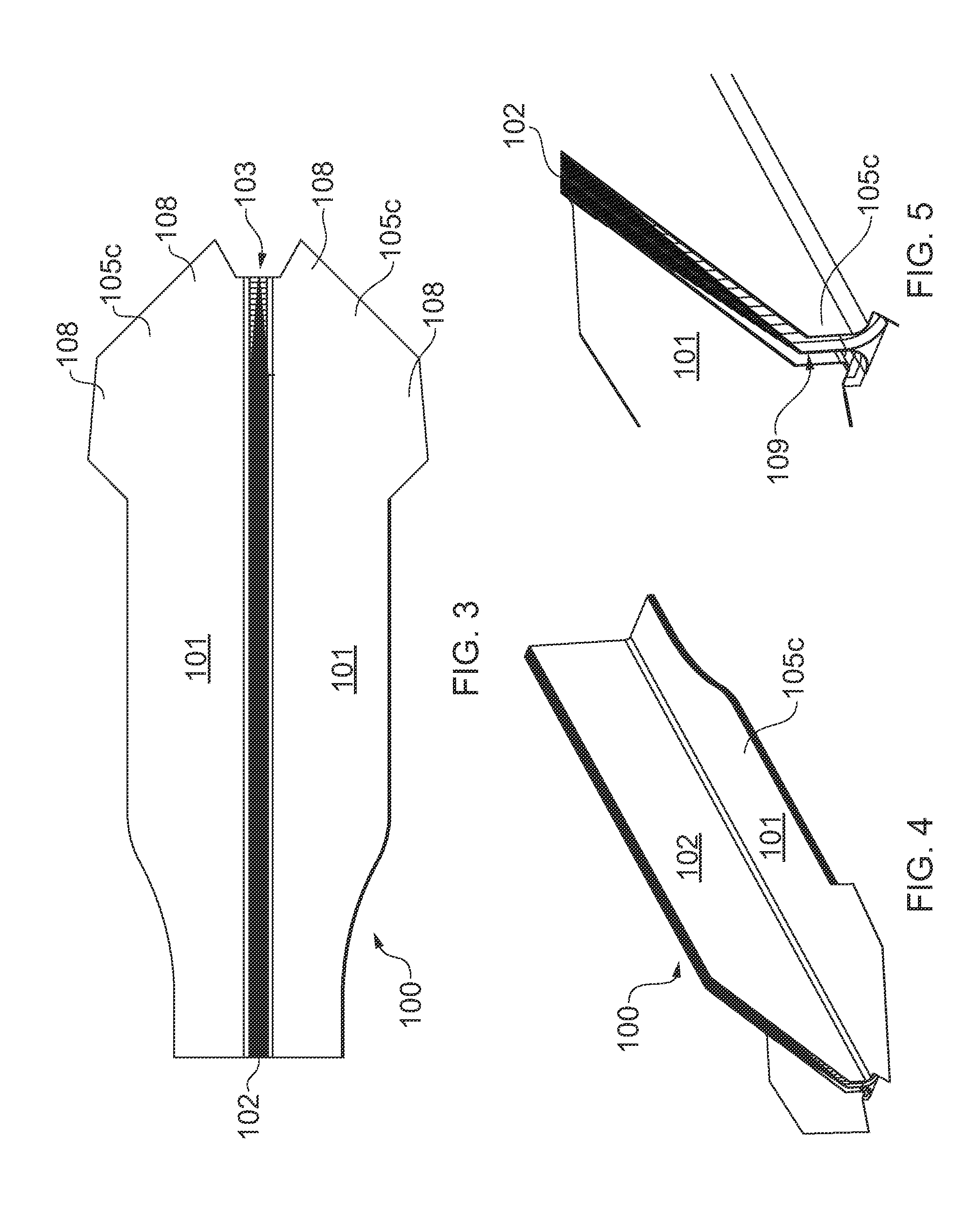Stringer
a composite material and stringer technology, applied in the field of laminated composite stringers, can solve the problems of panel and stringer a tendency to separate, stringer termination geometries do not fully exploit the benefits of constructing stringers from composite materials, and the area of local stress concentration, so as to reduce the thickness of the stack, increase the geometric possibilities of stringer termination, and inhibit crack initiation
- Summary
- Abstract
- Description
- Claims
- Application Information
AI Technical Summary
Benefits of technology
Problems solved by technology
Method used
Image
Examples
first embodiment
[0045]a stringer in accordance with the present invention will now be described. As shown in FIG. 1, the stringer 100 includes a flange 101 having a width W and an upstanding web 102 having a height H. Note that only one end of the stringer is shown in FIG. 1. The stringer 100 has a termination 103 at one end. Inboard of the termination, the stringer 100 has substantially constant section (not shown in FIG. 1). Adjacent to the termination 103, the flange 101 has a region of increased width W′ so as to form a stringer foot 104. The stringer 100 is formed from a pair of back-to-back L-shaped stacks of composite laminate plies 105.
[0046]The plies 105 are arranged such that the lowermost ply 105a is the largest ply and the uppermost ply 105b is the smallest ply. The plies are cut such that the lowermost ply 105a terminates at the stringer termination 103, and the uppermost ply 105b terminates a significant distance inboard of the termination 103. The remaining plies 105 intermediate the...
third embodiment
[0059]FIGS. 21 to 24 illustrate a stringer 300. The stringer 300 includes a stack of plies 305 arranged in a similar manner to those of the stringer 100. That is to say, the lowermost ply 305a is the largest ply and the uppermost ply 305b is the smallest ply. The stringer foot 304 has a free-form construction of substantially continuous curved edges, in contrast with the angular cut edges of the plies 105 of the stringer 100. The shape of the stringer foot 304 has been optimised for load transfer into a panel to which the stringer 300 is to be attached. However, the curved edges of the plies 305 are more difficult to cut than the straight edges of the plies 105 and 205 of the stringers 100 and 200, respectively.
[0060]To improve bonding of the stringer foot 304 to a panel 350 a pad 370 is laid over the stringer foot 304. The pad 370 effectively acts as a region of increased panel thickness for the panel 350. The pad 370 has a generally semi-circular or D-shaped construction of substa...
PUM
| Property | Measurement | Unit |
|---|---|---|
| Thickness | aaaaa | aaaaa |
| Structure | aaaaa | aaaaa |
| Width | aaaaa | aaaaa |
Abstract
Description
Claims
Application Information
 Login to View More
Login to View More - R&D
- Intellectual Property
- Life Sciences
- Materials
- Tech Scout
- Unparalleled Data Quality
- Higher Quality Content
- 60% Fewer Hallucinations
Browse by: Latest US Patents, China's latest patents, Technical Efficacy Thesaurus, Application Domain, Technology Topic, Popular Technical Reports.
© 2025 PatSnap. All rights reserved.Legal|Privacy policy|Modern Slavery Act Transparency Statement|Sitemap|About US| Contact US: help@patsnap.com



